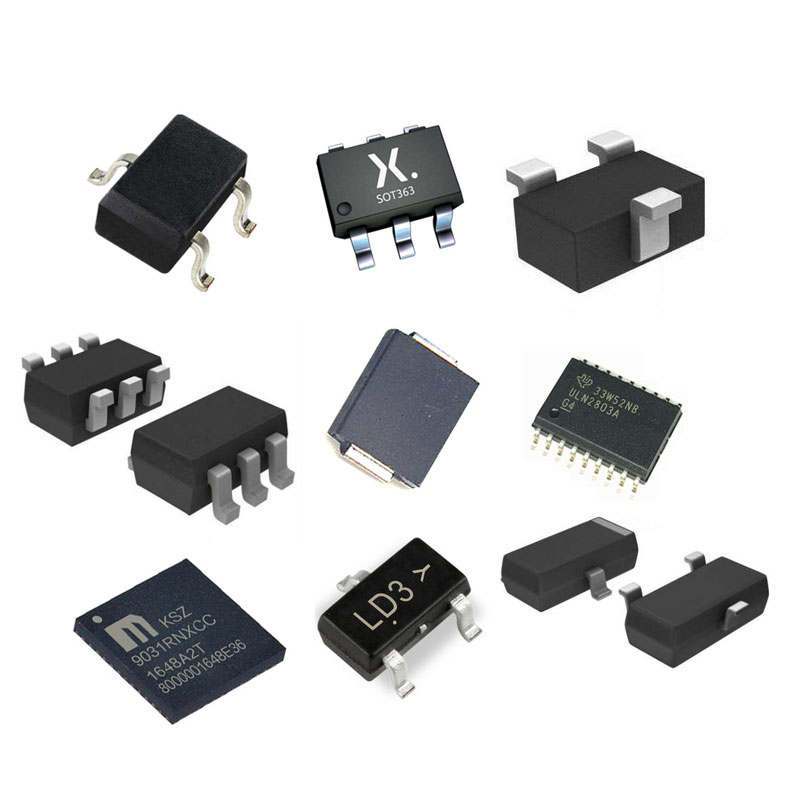
MCM packaging is a microelectronic packaging technology, which stands for Multichip Module. MCM packaging is designed to integrate multiple integrated circuit chips (chips) into a single package to achieve higher integration and performance.
Traditional single chip packages usually only contain one integrated circuit chip, which limits integration and functionality. However, as technology advances and integrated circuits develop, more functions and performance are required, and single-chip packaging becomes insufficient to meet the demand.
MCM packaging achieves higher integration, higher performance and lower power consumption by integrating multiple chips in one package and interconnecting them. In MCM packaging, the chips can be different types of integrated circuits, such as processors, memories, sensors, etc., which are connected together through high-density interconnect technology (usually a multi-layer printed circuit board).
Package features
MCM packaging is an advanced microelectronic packaging technology with many unique features and advantages. The following are the main features of MCM packaging in the following aspects:
1. High integration: Allows the integration of multiple chips (integrated circuits) in one package, including processors, memories, sensors, etc. This allows for a higher level of integration, with the entire system in one package rather than requiring multiple separate packages.
2.High performance: Multiple high-performance chips can be combined to form a powerful overall system. These chips can share data and resources to provide better
Excellent performance and computing power.
3. Low power consumption: High-density interconnection technology is usually used, which can shorten the signal transmission distance and reduce power consumption and signal delay. At the same time, the power consumption of the circuit can also be optimized due to the tight integration between chips.
4. Small size: Compared with combining multiple single-chip packages together, MCM packages usually have a smaller size. This is particularly advantageous in scenarios that require compact design and high integration.
5. High reliability: Direct connection during the packaging process reduces the number of connecting lines, thereby reducing the risk of failure points and improving system reliability.
6. Optimized thermal management: Allows better management of heat conduction between chips since they are closely arranged within the same package. This dissipates heat more effectively, lowers temperatures, and improves system performance and lifespan.
7. Modular design: The design has a high degree of modularity. Each functional module can be designed and tested independently, thus simplifying system development and maintenance. 8. Rapid production: Modular design and advanced manufacturing technology make the production cycle shorter and can be brought to market faster.
Package structure
The structure of an MCM package can vary based on specific design and application needs, but generally includes the following basic components:
1. Chip: The main component of the MCM package is multiple chips (integrated circuits). These chips can be different types of integrated circuits, such as processors, memories, sensors, etc. They are connected together through high-density interconnection technology to realize data exchange and collaborative work between each other.
2.Substrate: The substrate is the main carrier of MCM packaging and is used to support and connect chips. The substrate is usually a multilayer printed circuit board (PCB) or the carrier of other high-density interconnection technologies. Wire layers and vias on the substrate are used for interconnections between chips and connections to external systems.
3. Interconnects: Interconnect refers to connecting the pins or contact points between chips to the wire layer on the substrate. These interconnections can be tiny metal wires, ball/column solder joints, cables, or other high-density interconnection technologies that are used to transmit signals and power between chips.
4. Encapsulation Material-(Encapsulation Material): MCM packaging requires a protective shell to prevent the chip from physical damage and environmental impact. Commonly used packaging materials include epoxy resin, silicone, etc. Encapsulation materials also help dissipate heat and provide mechanical support.
5. Heat dissipation solution: In MCM packaging, multiple chips are integrated in a compact space, which may generate more heat. Therefore, thermal solutions such as heat sinks, thermal glue, heat pipes, etc. are often included in the package to ensure that the chip operates at normal operating temperature.
6. Power management: Multiple chips in an MCM package may require different voltage and current supplies. Therefore, power management circuitry is often included in the package to provide appropriate power to the individual chips.
7. Pins/interfaces: MCM packages need to be connected to external systems to achieve data input, output and power supply. Therefore, there will be pins or interfaces on the package for connecting to external circuit boards or devices.
Eurotech is a worldwide supplier and exporter of electronic components, specializing in ICs, LCDs, Memory, Chips, computer parts, networking equipments and other passive components.
Tel: (86) 755 8395 9469
E-mail: info@eurotech-ic.com